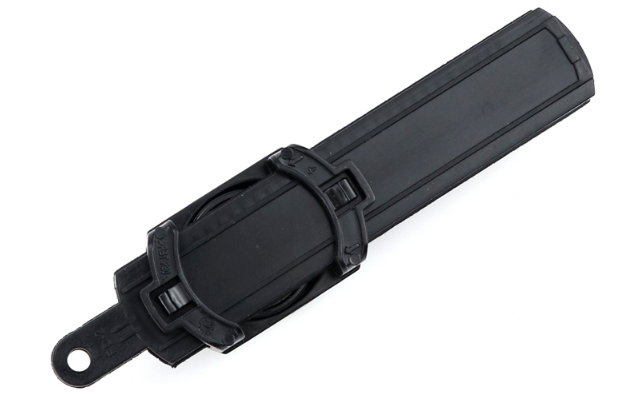Liner Dampers: The Unsung Heroes of Vibration Control
Have you ever noticed how some machinery operates with remarkable smoothness, free from disruptive vibrations and noise? The key often lies in an underrated yet potent device known as a liner damper. These components play a pivotal role in controlling vibrations, ensuring machines function both quietly and efficiently. Beyond comfort, managing vibrations is essential for prolonging equipment lifespan, enhancing performance, and ensuring safety.
An Overview of Liner Dampers
Understanding Their Purpose
Liner dampers are engineered to absorb and dissipate vibrational energy effectively. They are vital in several applications where vibration control is necessary to preserve the equipment's performance and structural integrity. By mitigating vibration amplitudes, liner dampers contribute to preventing structural damage and minimizing noise levels.

Essential Components
A standard liner damper comprises:
Damping Material: This may be a viscoelastic substance or a specifically designed composite that effectively absorbs energy.
Housing: This component encases the damping material and connects it to the structure experiencing vibration.
Mounting Hardware: This ensures that the damper is securely attached to the machinery.
Diverse Types of Liner Dampers
Tuned Mass Dampers
Tuned mass dampers feature a mass affixed to a spring and damper, specifically tuned to counteract particular vibration frequencies. These dampers are commonly found in high-rise buildings and bridges.
Viscous Dampers
Employing a fluid, typically oil or silicone, viscous dampers effectively dissipate vibrational energy through the resistance created by the fluid's viscosity, which mitigates motion.
Friction Dampers
Friction dampers utilize the resistance from friction between two surfaces to dampen vibrations, making them suitable for applications requiring rapid energy dissipation.
The Functionality of Liner Dampers
How They Operate
Linear hydraulic dampers convert vibrational energy into heat, which is then dissipated, through intricate physical interactions between the damping material and the vibrational forces.
Damping Methods
Passive Damping: This utilizes materials and designs that inherently dissipate energy without the need for additional input.
Active Damping: This involves systems capable of actively responding to vibrations through the use of sensors and actuators.
Utilization of Liner Dampers
In Industrial Machinery
Liner dampers are crucial in heavy machinery to minimize wear and tear, maintain accuracy, and reduce maintenance costs.
In the Automotive Sector
In automobiles, liner dampers play a vital role in diminishing engine vibrations and road noise, substantially improving the driving experience.
In Aerospace
Aircraft utilize liner dampers to reduce vibrations from engines and airflow, ensuring both structural stability and passenger comfort.
In Construction
Buildings and bridges incorporate liner dampers to counteract environmental vibrations and seismic activities, enhancing safety and durability.
Advantages of Liner Dampers
Vibration Mitigation
Liner dampers significantly lessen vibration amplitude, leading to a smoother operational experience.
Noise Reduction
Minimized vibrations translate to lower noise levels, fostering a more tranquil and pleasant atmosphere.
Enhanced Equipment Longevity
Lower vibrations decrease the likelihood of structural damage and mechanical wear, consequently prolonging the lifespan of machinery and structures.
Comparing Liner Dampers with Other Solutions
Side-by-Side Evaluation
In certain applications, liner dampers often surpass other damper types due to their distinctive material attributes and design adaptability.
Pros and Cons
Pros:
Efficient across a broad frequency spectrum
Customizable for specific applications
Additional resources:
FAQs | Everything You Need To Know About ElectroplatingReliable and durable
Cons:
May be more costly initially
Potential requirement for precise tuning to achieve optimal performance
Selecting the Appropriate Liner Damper
Considerations
Frequency Range: Confirm the damper operates effectively within the necessary frequency range.
Load Capacity: The damper should withstand the expected loads and vibrational forces.
Environmental Conditions: Factor in temperature, humidity, and other environmental influences.
Frequent Errors to Avoid
Disregarding Manufacturer Guidelines: Always adhere to the recommended installation and usage protocols.
Neglecting Maintenance: Conduct regular evaluations and maintenance to ensure peak performance.
Installation and Upkeep
Recommended Procedures
Correct Alignment: Ensure the damper aligns accurately with the vibrating source.
Reliable Mounting: Utilize suitable hardware for secure damper installation.
Maintenance Guidelines
Scheduled Inspections: Regularly check for signs of wear and damage.
Maintain Cleanliness: Keep the damper and its surroundings tidy to prevent contamination.
Case Studies
Practical Illustrations
A manufacturing facility achieved a 30% reduction in downtime after retrofitting liner dampers onto their machinery.
A premium car manufacturer greatly enhanced cabin comfort and reduced noise levels through the application of liner dampers.
Success Instances
Numerous contemporary skyscrapers employ tuned mass dampers to mitigate sway caused by high winds, boosting comfort and safety for occupants.
Advancements in Liner Damper Technology
Innovative Developments
Smart Dampers: These incorporate sensors and AI technology to adapt to evolving vibration patterns.
Cutting-Edge Materials: New composite materials with exceptional damping capabilities are emerging.
Trends on the Horizon
Sustainability Focus: There is an increasing emphasis on eco-friendly materials and production techniques.
Miniaturization: The industry is moving towards smaller and more efficient dampers for compact devices and applications.
Common Issues and Remedies
Installation Challenges
It's crucial to provide adequate training for installation teams to prevent common issues such as misalignment and improper mounting.
Optimizing Performance
Perform regular assessments and necessary adjustments to ensure optimal damping efficiency.
Final Thoughts
Liner dampers are not just accessories; they are essential for today's machinery and structural designs. Their unique advantages in vibration and noise reduction contribute significantly to the durability and efficiency of various systems. By selecting the appropriate damper and committing to proper maintenance, one can achieve seamless operation across numerous applications.

